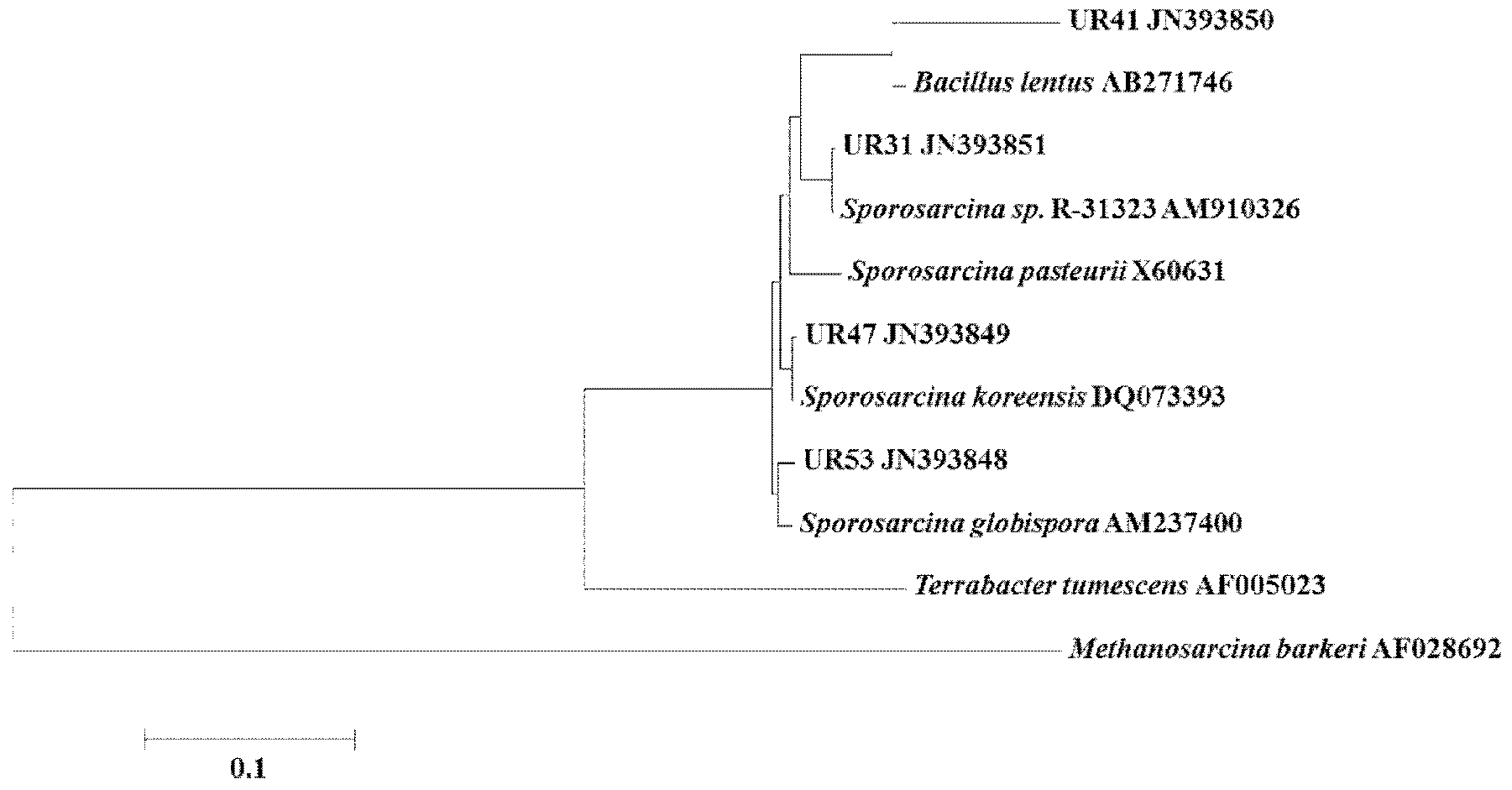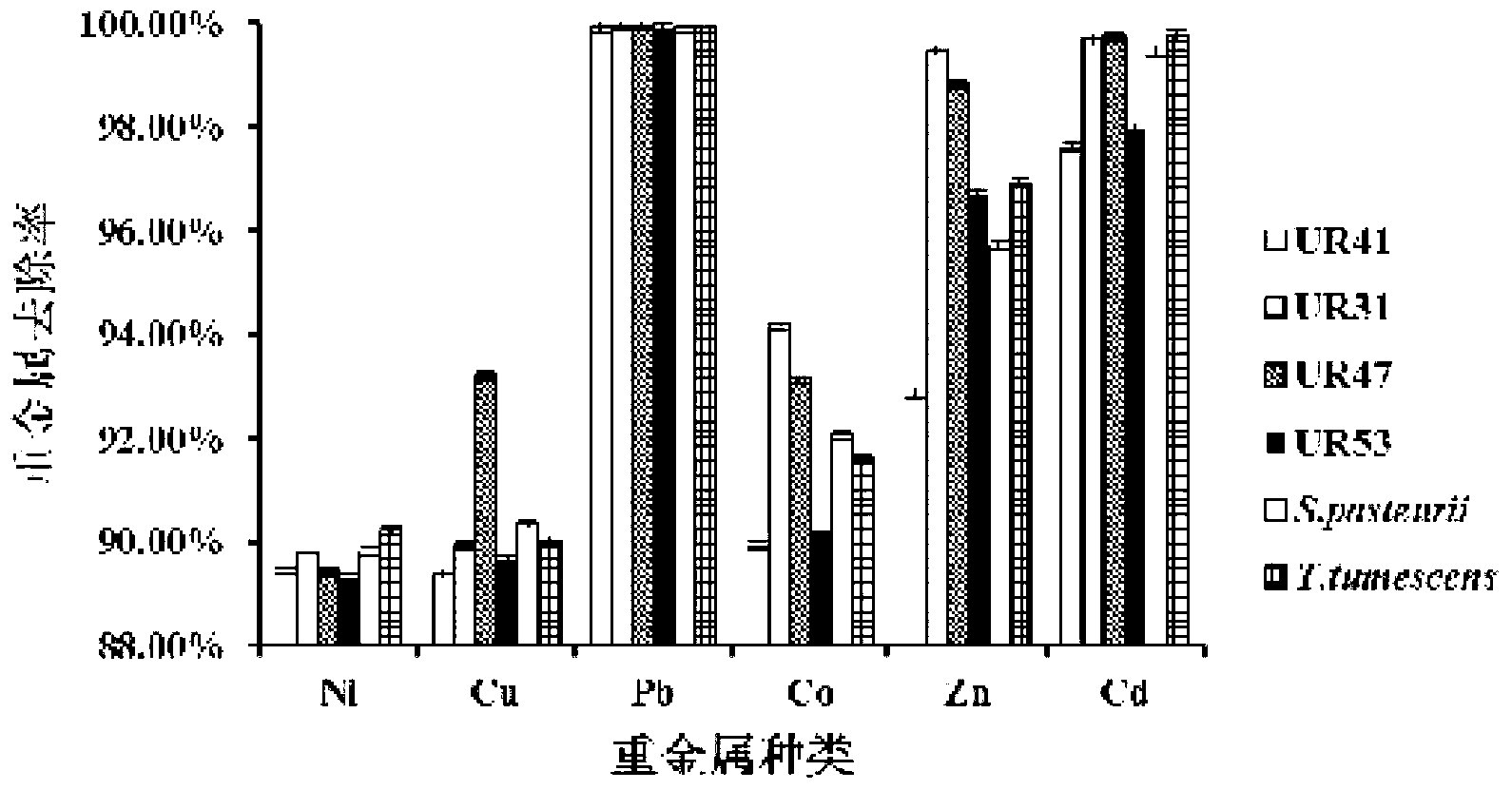Urease-producing microorganisms and method for solidifying heavy metals in subgrade by using same
A microorganism and urease-producing technology, applied in the direction of microorganism-based methods, biochemical equipment and methods, microorganisms, etc., can solve the problems of producing toxic sludge or other wastes, high cost, incomplete removal, etc., and achieve low cost and high effect Good, short-term effect
- Summary
- Abstract
- Description
- Claims
- Application Information
AI Technical Summary
Problems solved by technology
Method used
Image
Examples
Embodiment
[0032] Isolation and Screening of Urease-Producing Bacteria with the Ability to Immobilize Heavy Metals
[0033] 1. Sample collection
[0034] Sporosarcina pasteurii was obtained from the American type culture collection (American type culture collection), numbered ATCC11859, and Terrabacter tumescens was obtained from the General Microbiology Center of China Committee for the Collection of Microorganisms, numbered AS.1.2690.
[0035] 2. Isolation and screening of urease-producing strains
[0036] Urease-producing strains were isolated from soil samples collected from the Tsinghua University flower garden.
[0037] Bacteria have ureolytic enzymes, which can decompose urea to produce a large amount of ammonia, making the medium alkaline and red. This experiment takes advantage of this characteristic. After enriching and culturing the test samples at 37°C and 5M high concentration of urea for 24 hours, kill various microbial vegetative cells that cannot tolerate and utilize hi...
PUM
 Login to View More
Login to View More Abstract
Description
Claims
Application Information
 Login to View More
Login to View More - R&D
- Intellectual Property
- Life Sciences
- Materials
- Tech Scout
- Unparalleled Data Quality
- Higher Quality Content
- 60% Fewer Hallucinations
Browse by: Latest US Patents, China's latest patents, Technical Efficacy Thesaurus, Application Domain, Technology Topic, Popular Technical Reports.
© 2025 PatSnap. All rights reserved.Legal|Privacy policy|Modern Slavery Act Transparency Statement|Sitemap|About US| Contact US: help@patsnap.com



